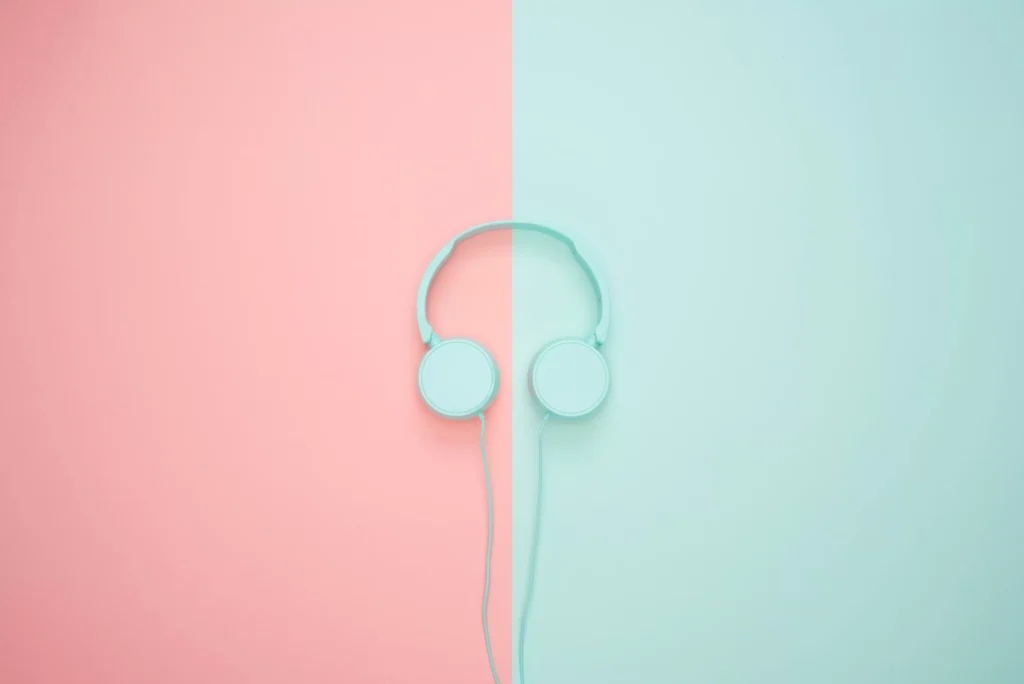The world is filled with colour. It is common for our minds to engage with different colours on a regular basis, and to associate them with various things.
Colour alone accounts for up to 90 percent of image judgments about products. While we are so familiar with colours, there is a wide range of uncertainty when it comes to using them in art and design.
Colour is perhaps the most important consideration when it comes to web and graphic design. A beautiful, engaging, seamless design relies on the right colour choice.
Even if everything else is in place, choosing the wrong colour can ruin a design.
Let’s take a look at an example. In the image below, you can see the exact same infographic – the same content, the same hierarchy, and the same positioning of elements.
What do you think looks better? Either A, which uses a fantastic colour combination that works well together, or B, which uses random colours without any rhyme or reason.

There is no doubt that A is the winner.
Let’s cover some of the basics of colour now that we understand its importance of it. Beginners need not worry. As someone who has never been artistic, I have found a few tricks to make you an expert on colour palettes in no time.
Primary Colours
Understanding colour theory begins with understanding the basics. There are three primary colours: red, blue, and yellow. A simple way to identify them is that they are colours that cannot be created by combining other colours. Using white and black, you can create all other colours.
As an alternative, secondary colours are created by combining three primary colours. Purple is created by blue and red; orange is created by blue and yellow, green, and red and yellow.
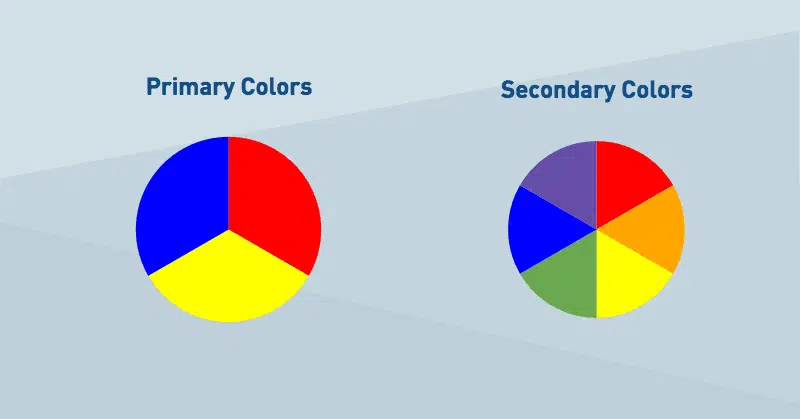
Tertiary colours are created by combining two secondary colours, but we’ll leave that for another time. Here’s where things get more complicated, so bear with me.
Hue, tint, tone, and shadows
In graphic design, primary, secondary, and tertiary colours are rarely used. Screens and prints look much better when all the colours are used.
Understanding colour requires an understanding of hue. Hues describe colours in fancy terms. Hues are not only primary and secondary colours, but also combinations of colours (e.g., green with purple).
As soon as black and white are added, things begin to get interesting. By using this method, millions of variations can be created. You can achieve tone, tint, and shadow by mixing a specific hue with white, black, or grey.
When white is mixed with a hue, it becomes tinted. In this way, colours appear softer and lighter, and light and dark hues can be played around with.
When you combine grey with a hue (or black and white), you get a tone. Essentially, you get a slightly different hue.
Black is mixed with a hue to create shadows. Due to this, colours become darker and more intense.
This graphic illustrates the differences between hues, tints, tones, and shadows. Compared to the primary colours, don’t you think these colour combinations look much more realistic?
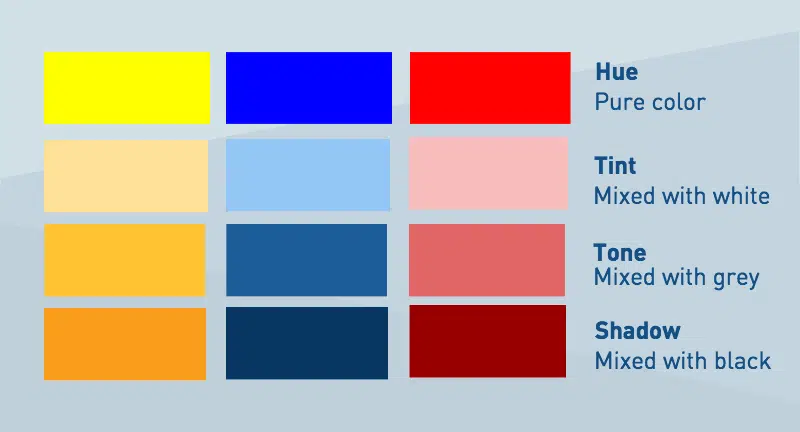
Your colour palette should follow these 3 rules
As you now know the basics of colour theory on the web, it’s time to start applying them and pick your own colour palette! To do so, we will follow only three simple rules. Let’s take a look at it.
1-The first step is to match the overall tone of your infographic
The goal of an infographic is probably clear to you when you design it. The purpose of your writing may be to convey a message, provide valuable information, or simply entertain the reader. Creating your colour palette begins with considering your infographic’s goal and purpose.
Images that are not well done can confuse readers. In the same way, colours behave in the same way. Dark, shadowy colours are appropriate for infographics about horror movies. You can use blue as a hue and play with tint, tone, and shadow when you are talking about boats. Avoid bright, fun colours such as yellow or orange for a business infographic. Your brand will look more professional if you use darker colours.
2-Choosing complementary colours is the second step
Like typefaces, colours have their own characteristics. There are some that work well together, and there are others that do not. View the example below – which colour palette looks better?
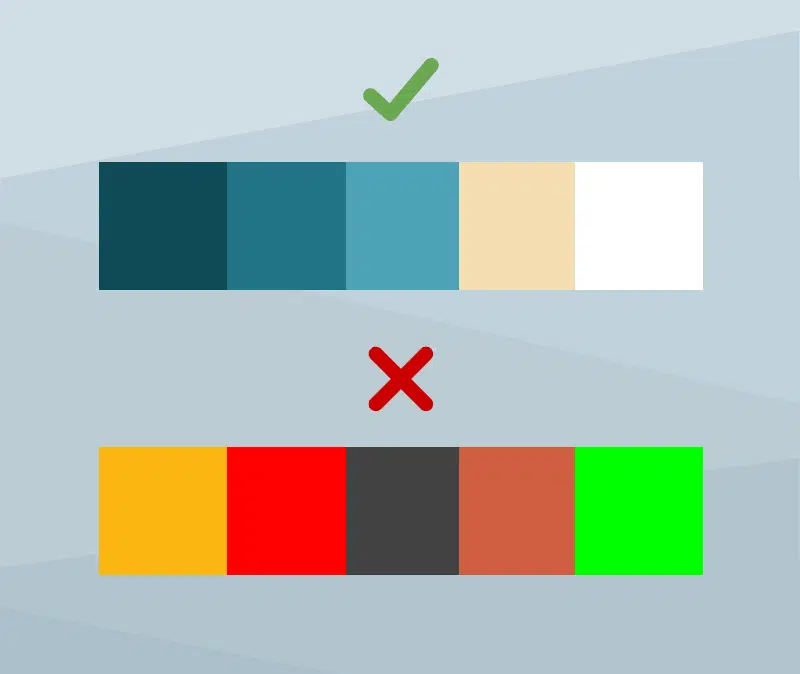
The first one, of course.
Although designers intuitively know which ones work well together, there is actually some science behind it. Understanding and visualizing the colour wheel is the first step. The graphic shows different hues and their tones, tints, and shadows in relation to each other.
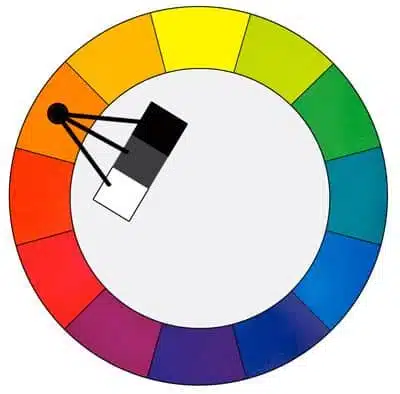
Presented in monochrome
If you want to pick colours that work well together, go for a monochromatic palette. By this, I mean using a single hue, along with a variety of tints, tones, and shades.
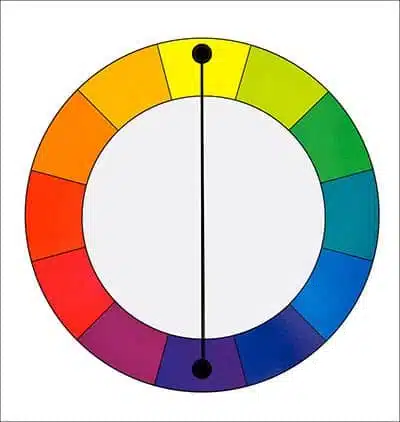
Complimentary
Those colours on the colour wheel opposite each other are complementary colours. You convey contrast and interest by combining these two colours. It is difficult to use these in large doses, but they are perfect for highlighting something, such as a call to action.
Analogous
A colour wheel that has adjacent colours feels comfortable working together. Additionally, they are effective for highlighting and adding contrast to specific elements without causing much disturbance. You should choose one dominant colour, one supporting colour, and one accent colour.
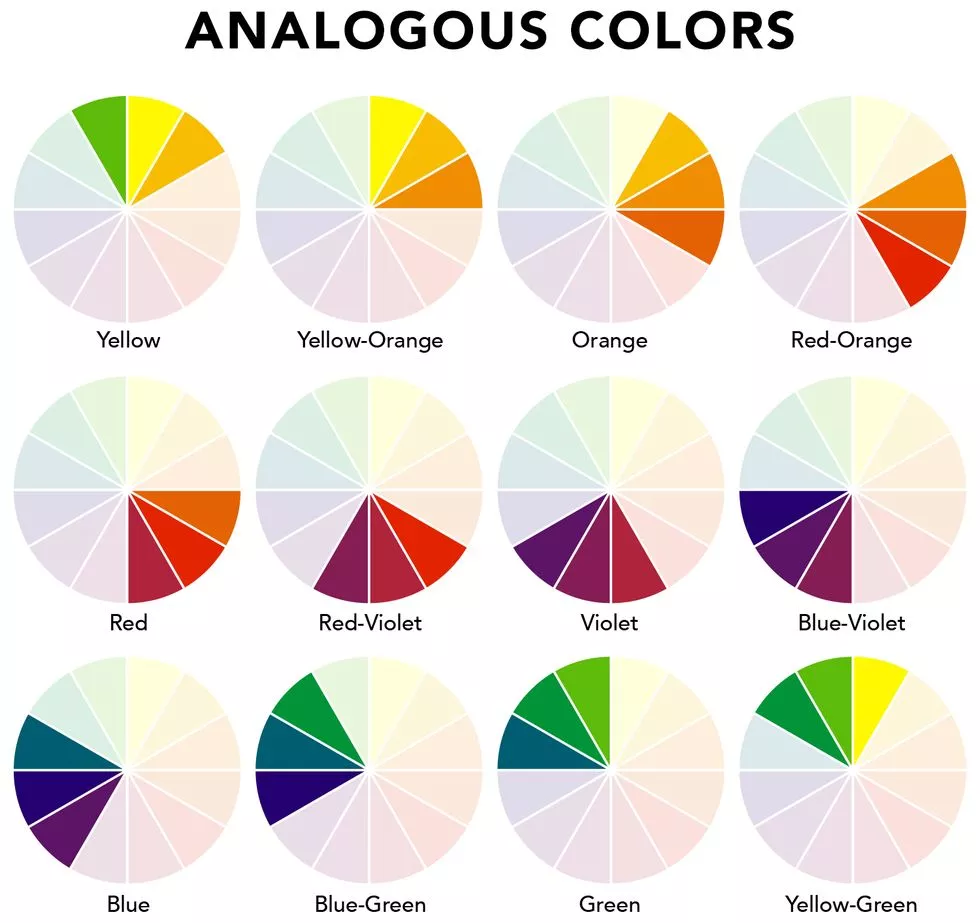
(Credits: Michael Stillwell)
You can find inspiration from colour.adobe.com, our most loved colour palettes if you’re lost.
3-Choosing 2-3 colours is the third step
There are times when simplicity is the best path. It is common for beginners to pick 5 or 6 colours for their designs. You should stick to just 2 or 3 – one should be clear and bold and the foundation of your design, while the second or third should be a complement that can be used as a call to action, or to highlight something relevant.
When in doubt, don’t give in. Play around with tones, tints, and shadows rather than picking 4-5 colours. It doesn’t take much to make a difference.
(All other Credits: Piktochart)
👉🏻 Look out for the latest Marketing & related Tips @lepakcreator Telegram Channel!
…………………..===========★★★★☆☆☆☆☆☆☆☆☆☆★★★===========…………………..
[Shout Out] Struggling to Find Quality Printing in Singapore? 🖨️Look no further! PRINTMYSTUFFSG is your go-to service for all your printing needs. Whether you need business cards, promotional materials, or custom prints, we’ve got you covered. Don’t settle for less—choose quality that stands out! Check them out today!
…………………..===========★★★★☆☆☆☆☆☆☆☆☆☆★★★===========…………………..

